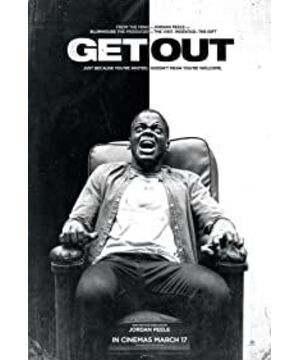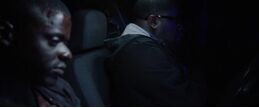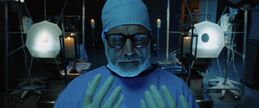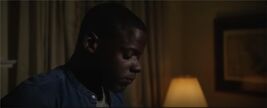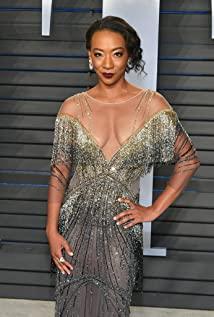Scene 1: The male protagonist wants to smoke, and the female protagonist cuts off the cigarette in the male protagonist's hand and throws it out the window. The male protagonist immediately received a call from his friend, and in the center of the camera was a cigarette in his friend's hand, implying that the male protagonist would be controlled by his girlfriend's family in the follow-up plot.
Scene 2: After the hero and heroine came to the heroine's parents' house and got off the bus, the hero and heroine had a chat with the heroine's parents. It should have been a medium shot of the characters talking, but the director's treatment was a long-term perspective and continued. Pulling the camera farther, for half a minute, creates a sense of escape and gives the audience an ominous foreboding.
Shot 3: The film uses the hero's viewpoint shots in the parts to create tension to strengthen the audience's empathy with the hero and highlight the tension of the atmosphere, while the heroine's viewpoint shots are never used, which makes the audience feel Reduce empathy for the heroine, so that the role of the heroine will always maintain a sense of mystery while being friendly, paving the way for the heroine's later drama to reveal the essence of the villain.
Scene 4: After the male protagonist found the photo of the female protagonist and other black people, he realized that his girlfriend was also an accomplice who sold black body tissues. At this time, his girlfriend suddenly appeared from behind. At this time, the audience's tension should have reached the highest point, but at this time the director arranged a very intriguing scene. The female protagonist squatted in the suitcase and looked at the camera, while the male protagonist stood and talked to the female protagonist. In this scene, the squatting female protagonist becomes the one who loses control, and the standing male protagonist becomes the one who looks at it from a high place. However, under the foundation of the previous plot, the audience's emotions will not relax, but feel Even if you stand on the side of the controlling body, you can't see through the thoughts of the heroine, which further enhances the sense of crisis.
At the same time, the layout of this picture is also intriguing. The wall behind the male protagonist takes up most of the picture, while there are very few behind the female protagonist, which makes the male protagonist look more oppressive. The contrast between body position control and wall distribution makes this picture more bizarre and expressive
About the deer in this film:
The element of deer appears many times in this film. According to the image of deer - with huge horns, it can be judged that they are all male deer. According to my understanding of the film, the role of deer in this film has four
1. Explain the behavior of the male protagonist providing assistance after hitting a black woman at the end of the film: At the beginning of the film, on the way to the female protagonist's house, the male protagonist seems to insert a scene of hitting and killing a deer, and gives a very long close-up
The guilt and self-blame in his heart can be seen from the male protagonist's expression
In the climax part of the film, the male protagonist bumped into a black female during his escape. Even though he knew that she was the villain who had undergone brain replacement surgery, he rescued him because of the guilt accumulated in his heart.
2. Bring out the story about the hero's mother: On the night when his mother had a car accident, the hero was sitting there watching TV, doing nothing.
Just like the man who killed the deer, he just looked at it, doing nothing.
(The element of TV also runs through the whole film, from childhood memories, and finally being tied to a stool to watch videos, and even the state after being hypnotized is set to be the same as watching TV. Personally, I think the purpose of this setting is to use characters that cannot be changed. The world on the other side of the TV to highlight the powerlessness of the protagonist.
3. Symbol of the male protagonist in this film: Deer has always been one of the hunting objects of hunters in the West. The male protagonist in this film is also the prey played by the female protagonist's family. They took advantage of the male protagonist's trust in the female protagonist and led him into the pre-set trap step by step. After the male protagonist was hypnotized, he woke up, and there was another deer head specimen on the wall of the room, just like the male protagonist looked at the deer corpse before. Looking down at him. This identity transition scene confirms the symbolic meaning of the deer in this film
Ironically, the heroine's father was pierced to death by the hero using the horns of the deer's head on the wall
At this time, the male protagonist and the deer became one, and the female protagonist's family, who was the hunter, was defeated by the prey.
4. Symbolizing the black people in this film: The theme of this film is that white people covet black people's "strong body", "bright eyes" and "beast-like sexual ability", so they want to get a black body through brain replacement surgery. In the West, the stag symbolizes "the male of physical strength, athleticism, and reproductive ability," because a stag with two majestic horns tends to outcompete mates and territorial counterparts more easily. Therefore, the buck is a symbol of the black people in the eyes of the heroine's family in this film.
View more about Get Out reviews


